I do not say anything to my dog when he is in point. I expect him to hold point till I get to him without saying whoa and allow me to flush the bird. I feel if you train your dog this way from the start it avoids issues down the road. The more you keep your mouth closed the better off you are. Talking to your dog when he is on point disrupts their concentration.
Pen raised birds have a totally different smell than wild birds, they eat different food than wild birds and a wild birds feathers have more oil on them to repell moisture to mention just a couple things.Planted quail do not act like wild birds nor are they planted most times where you usually would find wild birds.
Good post. And, penraised birds usually stand around and live in their own shit, so... That probably makes them smell different too.
Good post.I see a lot of people do it that way.
I tend not to say anything (if I can keep my mouth shut). If its in training with a launcher I launch the bird as soon as they move, and put them back without saying anything. Then work on making them stand still before moving to another launcher.
Don't get in a huge hurry to flush the birds. You don't want the dog to feel like it's a race to get the bird up in the air. She might start trying to flush them on her own...
But yeah, there's no need to fart around once the dog goes on point.
Another good post. Start off with shorter time that the dog has to stand before flushing and work your way to a longer times, if that makes sense. It's not good grammar I can tell you that!
I've seen dogs that aren't that tight when they are on pigeons and penraised, but look fantastic when on wild birds.
Riley, my oldest, knows the training game all too well, especially on pigeons. He'll point them, but with a lackadasical attitude. But get him in a trial or hunting situation and he tightens up real nice.
Pretty common. Or if you train in the same spots, using the same scenerios...
